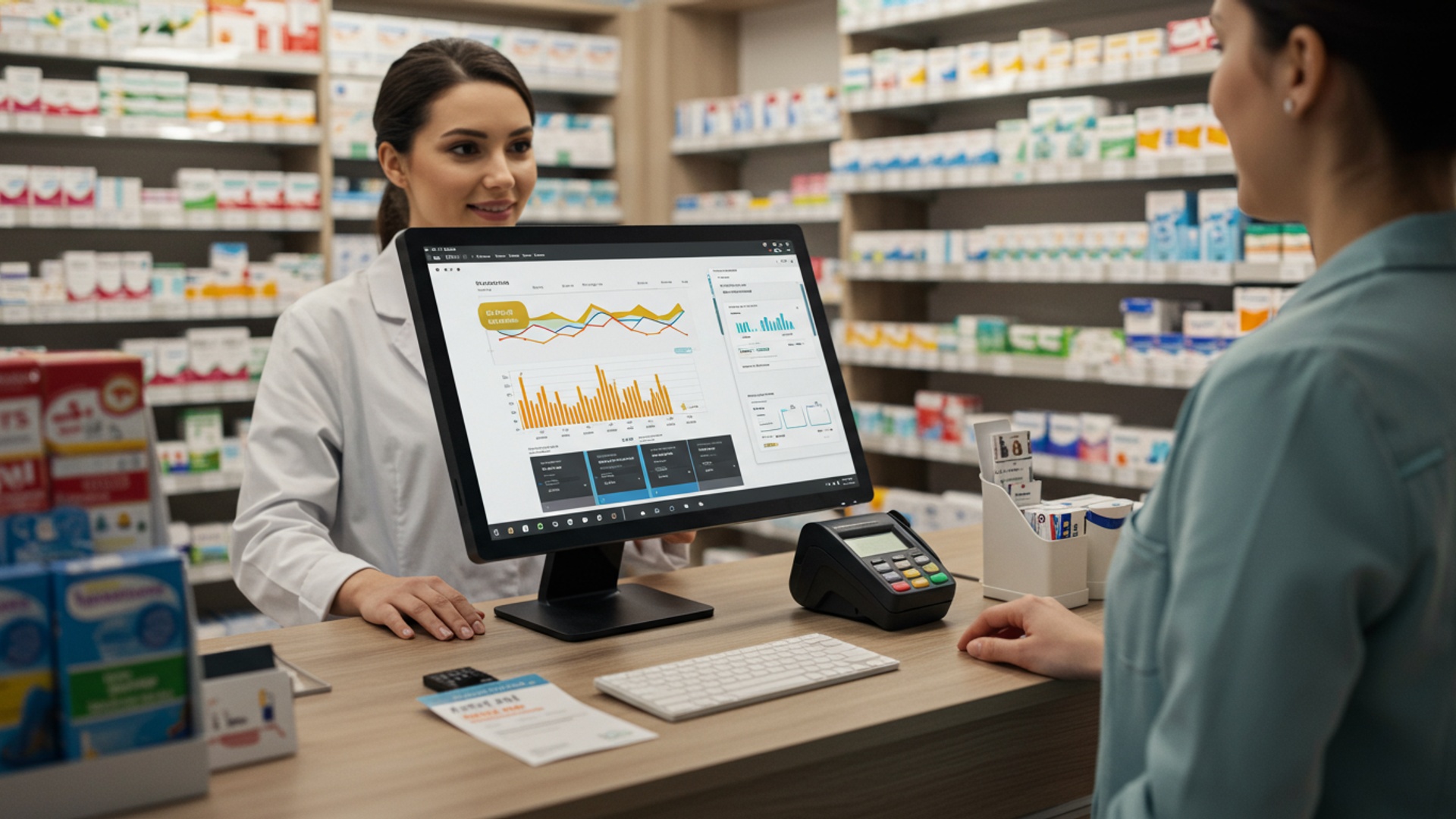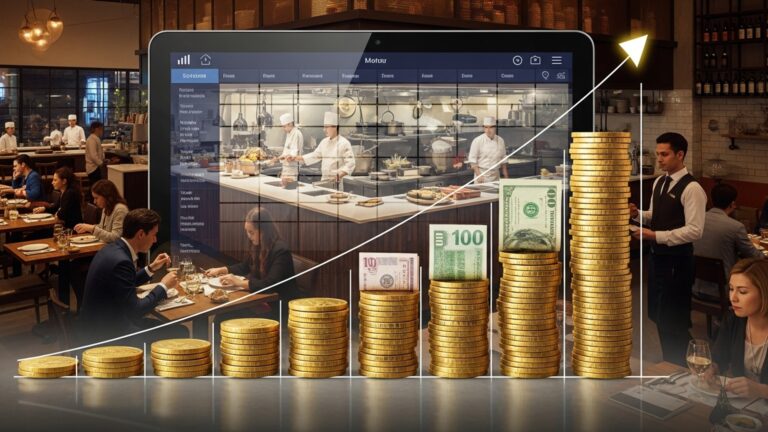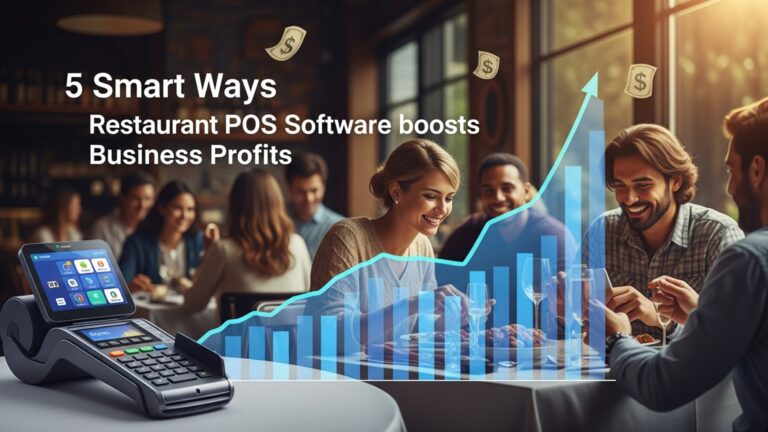Discover 7 Essential Features for Pharmacy POS Software Success
In today’s dynamic healthcare landscape, where telehealth and intricate supply chains redefine patient care, a pharmacy’s operational backbone is its POS software. This isn’t merely about processing transactions; it’s about precision, compliance. elevating patient safety. Modern pharmacies demand systems that go beyond basic sales, integrating real-time inventory management for controlled substances, facilitating seamless e-prescribing integration. automating complex insurance verifications. A truly effective POS software for pharmacy empowers staff to efficiently manage prescription workflows, minimize dispensing errors through embedded checks. provide focused patient counseling, thereby navigating the escalating demands of regulatory pressures and optimizing overall clinical operations.

Streamlined Prescription Management and Dispensing
At the core of any successful pharmacy operation lies the efficient and accurate management of prescriptions. A superior POS software for pharmacy must offer robust features for handling the entire prescription lifecycle, from receipt to dispensing. This isn’t merely about data entry; it’s about safeguarding patient health and optimizing workflow.
Key functionalities in this area include:
- Prescription Entry and Verification
- Drug Utilization Review (DUR)
- Dosage Calculation and Label Printing
- Refill Management
The system should allow for quick and accurate entry of new prescriptions, whether electronically transmitted (e-prescribing) or manually entered. It must include features for verifying prescriber details, drug details. patient eligibility.
Essential for patient safety, this feature automatically checks for potential drug-drug interactions, drug-allergy interactions, duplicate therapy. appropriate dosages. For instance, if a patient is prescribed two medications that could cause a dangerous interaction, the system should flag it immediately, prompting the pharmacist for review.
Automated calculations reduce the risk of human error, especially for complex pediatric or compounded prescriptions. The software should then generate clear, compliant prescription labels with all necessary insights, including patient name, drug name, dosage, directions. pharmacy details.
Efficiently managing refills, including tracking remaining refills, authorization requests. automated reminders for patients, significantly enhances patient adherence and operational flow.
Real-world application: Imagine a busy Saturday morning. A patient brings in a new prescription. With an advanced POS software for pharmacy, the technician enters the prescription, the system instantly cross-references it with the patient’s profile and current medications for any red flags. then precisely calculates the dose and prints the label. This not only speeds up the process but also provides a critical safety net, allowing pharmacists to focus on patient counseling rather than manual checks.
Intelligent Inventory Management
For a pharmacy, inventory is more than just stock; it’s patient care, regulatory compliance. a significant financial asset. An effective POS software for pharmacy provides intelligent inventory management capabilities that go far beyond basic tracking.
Core aspects include:
- Real-time Tracking and Stock Levels
- Automated Reordering
- Expiry Date Management
- Controlled Substance Tracking
- Multi-location Inventory
Know exactly what you have on hand at any given moment. This prevents stockouts of critical medications and overstocking of slow-moving items.
Based on historical sales data, current stock levels. vendor lead times, the software can automatically generate purchase orders, saving countless hours and ensuring optimal stock. This is particularly crucial for maintaining adequate supplies of high-demand medications.
Medications have strict expiry dates. The software should track these dates and alert staff to products nearing expiration, allowing for proactive measures like returns or rotation, minimizing waste and ensuring patient safety.
Regulatory bodies require meticulous tracking of controlled substances. The software must provide robust features for logging every dose, managing discrepancies. generating audit-ready reports.
For pharmacies with multiple branches, the ability to view and manage inventory across all locations from a central system is invaluable for inter-store transfers and consolidated purchasing.
Consider the difference between manual and automated inventory management:
| Feature | Manual Inventory Management | Automated Inventory Management (POS Software for Pharmacy) |
|---|---|---|
| Stock Tracking | Physical counts, spreadsheets, prone to human error, often outdated. | Real-time updates, accurate counts, automatic adjustments upon sale/receipt. |
| Reordering | Based on visual checks or simple historical data, time-consuming, risk of stockouts/overstock. | Algorithm-driven, considers usage trends, vendor lead times, auto-generates purchase orders. |
| Expiry Dates | Manual checks, risk of expired stock remaining on shelves. | Automated alerts for nearing expiry, facilitates first-in, first-out (FIFO) management. |
| Controlled Substances | Paper logs, highly labor-intensive, high risk of non-compliance. | Digital logs, audit trails, automated reporting for regulatory compliance. |
| Efficiency | Low, significant staff time diverted to inventory tasks. | High, frees up staff for patient care, reduces operational costs. |
Actionable takeaway: Investing in a POS software for pharmacy with advanced inventory management can drastically cut down on waste, prevent lost sales due to stockouts. ensure regulatory compliance, directly impacting your bottom line and reputation.
Robust Point-of-Sale (POS) Functionality
While often seen as merely a checkout system, the POS component of a POS software for pharmacy is the critical interface between your pharmacy and your customers. It needs to be fast, flexible. secure to handle the unique demands of a pharmacy environment.
Key features include:
- Efficient Transaction Processing
- Insurance Claim Processing
- Signature Capture and Receipts
- Customer Loyalty Programs
- Refunds, Returns. Voids
Quick barcode scanning for OTC items and prescription lookup, ability to handle multiple payment types (cash, credit/debit cards, FSA/HSA cards). split tender options.
Seamless integration with third-party payers for real-time claim submission and adjudication. This includes managing co-pays, deductibles. explaining benefits to patients.
Digital signature capture for prescription pickups and credit card transactions reduces paper waste and provides easily retrievable records. Customizable digital or printed receipts.
Built-in functionality to manage loyalty points, discounts. promotional offers, encouraging repeat business and enhancing customer engagement.
A straightforward process for handling common transaction adjustments, ensuring accuracy and auditability.
Real-world application: A patient comes to pick up a prescription. The cashier quickly scans the prescription barcode, the system automatically processes the insurance claim, calculates the co-pay. offers the patient options to pay using their FSA card or a combination of cash and credit. The patient signs digitally. a receipt is emailed to them, all within seconds. This efficiency is paramount for managing queues and providing a positive customer experience.
Comprehensive Patient Management and Profiles
A pharmacy’s success is deeply intertwined with its patient relationships. A top-tier POS software for pharmacy acts as a central hub for all patient-related details, moving beyond just prescription history to encompass a holistic view of each individual.
Essential components include:
- Detailed Patient Profiles
- Allergy and Medical Condition Alerts
- Communication Tools
- Provider Management
- Consent Management
Beyond basic demographics, profiles should store allergies, medical conditions, preferred communication methods, insurance data. a complete prescription history from your pharmacy. This enables pharmacists to provide personalized and safer care.
Linked to the DUR system, these alerts are crucial for preventing adverse drug reactions. For example, if a patient with a penicillin allergy is prescribed an amoxicillin, the system should issue an immediate, highly visible alert.
Integration with patient messaging systems (SMS, email) for refill reminders, medication adherence prompts. general health insights. This proactive communication can significantly improve patient outcomes.
Tracking prescribing physicians and their contact insights, streamlining communication when clarification or authorization is needed.
Recording patient consents for various services, privacy policies (e. g. , HIPAA acknowledgments). communication preferences.
Actionable takeaway: By centralizing and intelligently leveraging patient data, a good POS software for pharmacy empowers pharmacists to offer more personalized advice, improve medication adherence. ultimately enhance patient safety and satisfaction, fostering long-term loyalty.
Powerful Reporting and Analytics
Data is the new currency. for a pharmacy, understanding your operational and financial data is crucial for strategic decision-making. A robust POS software for pharmacy provides powerful reporting and analytics tools that turn raw data into actionable insights.
Look for capabilities such as:
- Sales Reports
- Inventory Reports
- Prescription Volume and Performance
- Financial Reports
- Adherence and Clinical Reports
Detailed reports on prescription sales, OTC sales, sales by product category, time of day. even by individual pharmacist. This helps identify peak hours, best-selling products. areas for improvement.
Insights into inventory turnover, dead stock, products nearing expiry. purchasing trends. This allows for optimized ordering and reduced waste.
Track the number of prescriptions dispensed, average wait times. individual pharmacist dispensing metrics. This helps in staffing optimization and performance reviews.
Generate reports on daily sales, profit margins, accounts receivable. reconciliation, providing a clear financial picture of the pharmacy’s health.
Some advanced systems can generate reports on patient adherence to specific medications or identify patients who might benefit from medication therapy management (MTM) services.
Real-world application: A pharmacy owner uses the analytics dashboard of their POS software for pharmacy to discover that a particular allergy medication consistently sells out on Friday afternoons. They adjust their reordering schedule and stock levels for that item, ensuring it’s always available when demand peaks, leading to increased sales and happier customers. They also identify slow-moving OTC products and decide to run a promotion to clear that stock, freeing up capital.
Seamless Integration Capabilities
No pharmacy operates in a vacuum. Modern healthcare relies on interconnected systems. An essential feature for any POS software for pharmacy is its ability to seamlessly integrate with other critical platforms, creating a cohesive and efficient digital ecosystem.
Key integration points include:
- Electronic Medical Records (EMR) / Electronic Health Records (EHR)
- Wholesale Distributors
- Insurance Payers
- Compounding Software
- Telehealth Platforms
Integration allows for direct access to patient medical history, diagnoses. lab results, providing pharmacists with a more complete clinical picture for better decision-making and drug utilization reviews.
Connecting directly with suppliers for automated ordering, price updates. inventory synchronization. This streamlines the purchasing process and ensures competitive pricing.
Real-time electronic claim submission and adjudication significantly reduce manual processing and claim rejections.
For pharmacies that compound medications, integration ensures that compounded formulas and ingredients are accurately tracked and billed through the POS.
As virtual care grows, integration allows for smoother prescription processing for remote consultations.
Consider a hypothetical API integration for prescription transfer from an EMR:
// Example of a conceptual API call for prescription transfer
// This is illustrative and simplified
POST /api/v1/prescriptions
Host: yourpharmacypos. com
Content-Type: application/json
Authorization: Bearer [Your_API_Key] { "patientId": "PAT12345", "medicationName": "Amoxicillin", "dosage": "500mg", "quantity": 21, "refills": 2, "prescriberId": "DR9876", "instructions": "Take one capsule three times daily for 7 days." }
This type of integration reduces manual data entry, minimizes transcription errors. accelerates the dispensing process, allowing pharmacists to spend more time on patient care rather than administrative tasks. It’s a cornerstone for building a truly modern and efficient pharmacy.
Security and Regulatory Compliance (HIPAA)
Handling sensitive patient health data (PHI) and controlled substances means that security and compliance are non-negotiable for any POS software for pharmacy. Adherence to regulations like HIPAA (Health Insurance Portability and Accountability Act) is paramount to protect patient privacy and avoid severe penalties.
Essential security and compliance features:
- HIPAA Compliance
- Data Encryption
- Access Control and User Permissions
- Audit Trails
- Secure Payment Processing
- Data Backup and Disaster Recovery
The software must be designed to meet HIPAA’s stringent requirements for protecting PHI, including secure data storage, transmission. access controls.
All sensitive data, both in transit and at rest, should be encrypted using industry-standard protocols to prevent unauthorized access.
Granular control over who can access specific functions and data within the system. For example, a pharmacy technician might have different access levels than a pharmacist or store manager.
Comprehensive logging of all actions performed within the system, including who accessed what data and when. This is vital for accountability and demonstrating compliance during audits.
Adherence to PCI DSS (Payment Card Industry Data Security Standard) for handling credit card insights, ensuring all payment transactions are secure.
Robust backup solutions and a clear disaster recovery plan to ensure business continuity and data integrity in case of system failure or data loss.
Actionable takeaway: Choosing a POS software for pharmacy that prioritizes security and compliance is not just about avoiding fines; it’s about building trust with your patients and safeguarding your pharmacy’s reputation. Always inquire about the vendor’s security protocols and their track record for maintaining compliance with relevant healthcare regulations.
Conclusion
Ultimately, selecting the right POS software for your pharmacy transcends mere transaction processing; it’s about safeguarding patient well-being and streamlining complex operations. By embracing features like robust prescription management, real-time inventory tracking for controlled substances. seamless integration with e-prescribing platforms, you elevate your service. My personal tip is to view your POS as a strategic partner in healthcare delivery, not just a cash register. Consider how it can support patient adherence programs or simplify compliance with evolving digital health regulations, a significant current trend in healthcare. Therefore, don’t just implement; optimize. A modern pharmacy POS, much like the precision needed in dispensing medication, ensures accuracy, efficiency. ultimately, patient trust. Focus on a system that empowers your team, reduces errors. allows you to dedicate more time to critical patient care, transforming your pharmacy into a beacon of modern, efficient healthcare.
More Articles
A Complete Guide How to Select the Best POS Billing Software for Business
Learn How to Select the Right POS Software for Your Business Success
How to Master Inventory Management with POS in India 5 Tips
5 Essential GST Invoicing Tips for Small Businesses to Master Compliance
How to Set Up Android POS Software for Your Small Business Easily
FAQs
Why is smart inventory management so essential for a pharmacy?
It’s all about keeping track of every single item, from medications to over-the-counter products. Good software alerts you to low stock, expiring items. helps automate reorders, preventing you from running out of essential drugs and reducing waste.
How does the software make handling prescriptions easier and safer?
It streamlines the entire process – from entering new scripts to verifying them and dispensing. Features often include e-prescribing integration, quick access to patient history. crucial checks for drug interactions or allergies, making things faster and more secure.
Can I keep detailed records for my patients?
Absolutely! You can store complete patient profiles, including their medical history, allergies, insurance details. all past prescriptions. This helps you offer truly personalized care and super-fast service.
What kind of insights can I get to improve my pharmacy’s business?
The software churns out valuable reports on sales trends, inventory turnover, prescription volumes. more. These insights are gold for spotting patterns, making smart business decisions. boosting your pharmacy’s bottom line.
Does this software help me stay compliant with regulations?
Yes, it’s built to help you meet critical regulatory requirements like HIPAA for patient privacy and tracking controlled substances. It keeps detailed audit trails and handles data securely, so you can breathe easier about compliance.
How seamless are payment and insurance claims with this system?
Pretty seamless! It integrates smoothly with various payment options – cards, mobile payments – and often handles direct insurance billing. This means quicker checkouts for patients and less hassle for your staff.
Can it talk to other systems I use in my pharmacy?
Many top-tier pharmacy POS solutions are designed to integrate with other key systems, like electronic health records (EHRs), your wholesale distributors for automated ordering. even accounting software, creating a much smoother, connected workflow.





